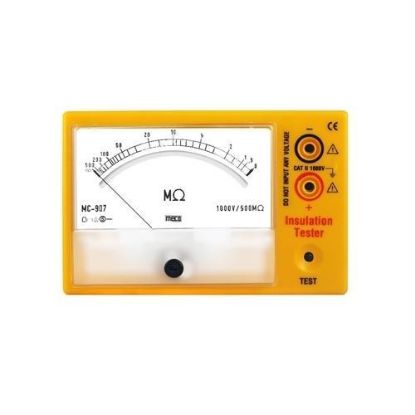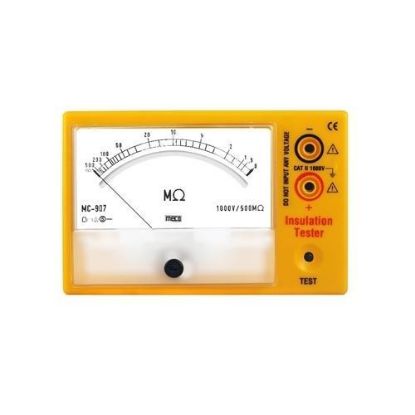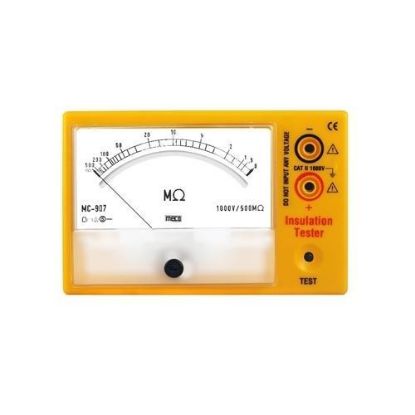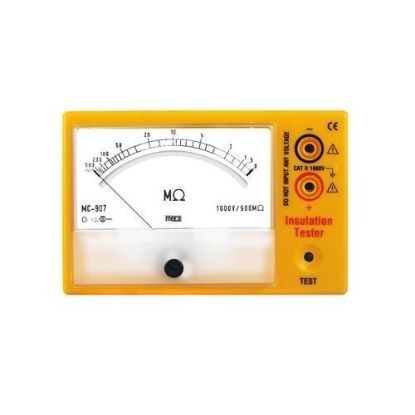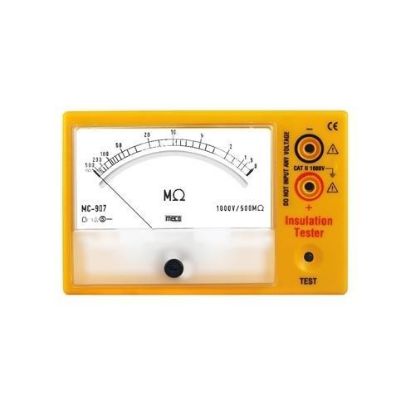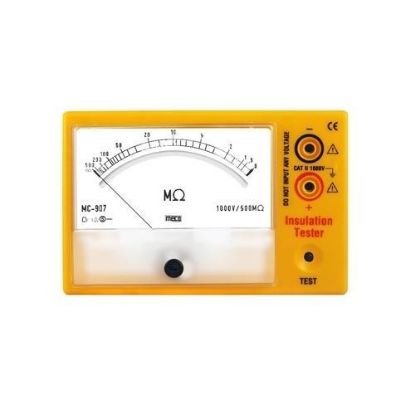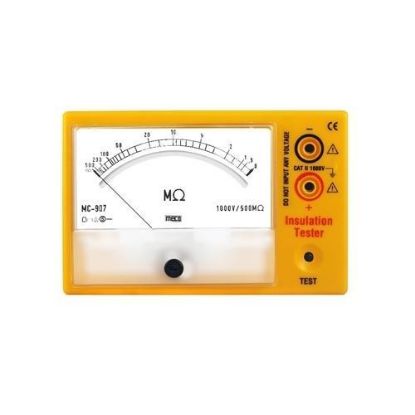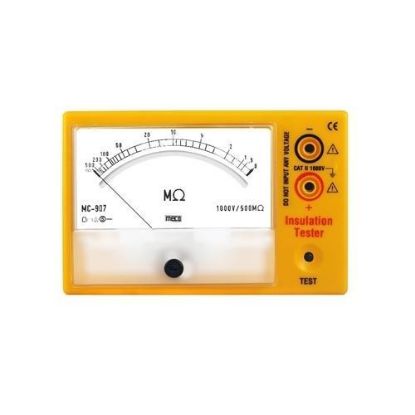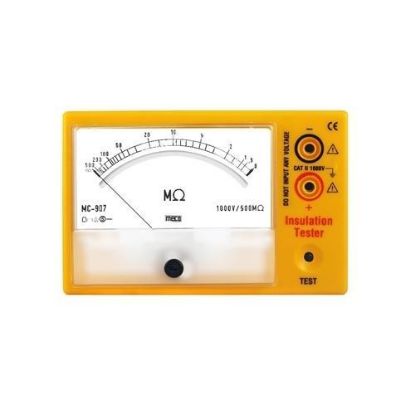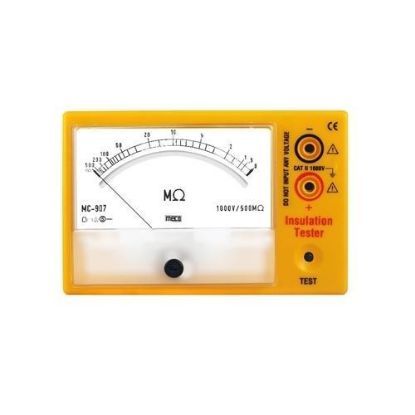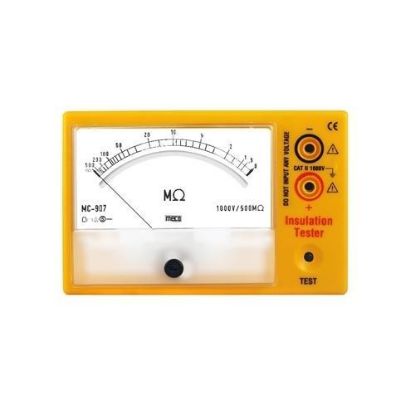Reachable at 9560662883  011-46039993 (Ext. 21 to 32) (10am - 06pm)
011-46039993 (Ext. 21 to 32) (10am - 06pm)
You have no items in your shopping cart.
Filter by price
Products tagged with 'insulation tester'
Insulation Tester Analog - Model:MC-901 , Test Voltage DC:100 v
A high voltage, low current DC charge is used by insulation testers to measure the resistance in wires and motor windings in order to find current leakage and defective or damaged insulation, which can result in arc faults, blown circuits, and the possibility of electrical shock or fire.
Insulation Tester Analog - Model:MC-901BA , Test Voltage DC:100 V
A high voltage, low current DC charge is used by insulation testers to measure the resistance in wires and motor windings in order to find current leakage and defective or damaged insulation, which can result in arc faults, blown circuits, and the possibility of electrical shock or fire.
Insulation Tester Analog - Model:MC-903BA , Test Voltage DC:500 v
A high voltage, low current DC charge is used by insulation testers to measure the resistance in wires and motor windings in order to find current leakage and defective or damaged insulation, which can result in arc faults, blown circuits, and the possibility of electrical shock or fire.
Insulation Tester Analog - Model:MC-904 , Test Voltage DC:500 V
A high voltage, low current DC charge is used by insulation testers to measure the resistance in wires and motor windings in order to find current leakage and defective or damaged insulation, which can result in arc faults, blown circuits, and the possibility of electrical shock or fire.
Insulation Tester Analog - Model:MC-904BA, Test Voltage DC:500 v
A high voltage, low current DC charge is used by insulation testers to measure the resistance in wires and motor windings in order to find current leakage and defective or damaged insulation, which can result in arc faults, blown circuits, and the possibility of electrical shock or fire.
Insulation Tester Analog - Model:MC-941 , Test Voltage DC:500 v
A high voltage, low current DC charge is used by insulation testers to measure the resistance in wires and motor windings in order to find current leakage and defective or damaged insulation, which can result in arc faults, blown circuits, and the possibility of electrical shock or fire.
Insulation Tester Analog - Model:MC-941BA , Test Voltage DC:500 v
A high voltage, low current DC charge is used by insulation testers to measure the resistance in wires and motor windings in order to find current leakage and defective or damaged insulation, which can result in arc faults, blown circuits, and the possibility of electrical shock or fire.
Insulation Tester Analog - Model:MC-906 , Test Voltage DC:1000 v
A high voltage, low current DC charge is used by insulation testers to measure the resistance in wires and motor windings in order to find current leakage and defective or damaged insulation, which can result in arc faults, blown circuits, and the possibility of electrical shock or fire.
Insulation Tester Analog - Model:MC-906BA , Test Voltage DC:1000 v
A high voltage, low current DC charge is used by insulation testers to measure the resistance in wires and motor windings in order to find current leakage and defective or damaged insulation, which can result in arc faults, blown circuits, and the possibility of electrical shock or fire.
Insulation Tester Analog - Model:MC-907 , Test Voltage DC:1000 V
A high voltage, low current DC charge is used by insulation testers to measure the resistance in wires and motor windings in order to find current leakage and defective or damaged insulation, which can result in arc faults, blown circuits, and the possibility of electrical shock or fire.
Insulation Tester Analog - Model:MC-907BA , Test Voltage DC:1000 V
A high voltage, low current DC charge is used by insulation testers to measure the resistance in wires and motor windings in order to find current leakage and defective or damaged insulation, which can result in arc faults, blown circuits, and the possibility of electrical shock or fire.



